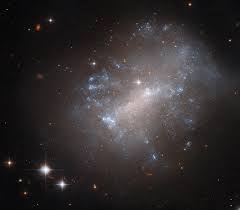Today’s Current Affairs: 23rd aug 2023 for UPSC IAS exams, State PSC exams, SSC CGL, State SSC, RRB, Railways, Banking Exam & IBPS, etc
Table of Contents
Respiratory Syncytial Virus (RSV):

The US Food and Drug Administration (FDA) recently approved the first vaccine that protects newborns from Respiratory Syncytial Virus (RSV).
- Respiratory Syncytial Virus (RSV) is a common respiratory virus.
- RSV is one of the most frequent causes of childhood illness.
- It usually causes mild, cold-like symptoms.
- Premature infants, babies younger than 6 months old, people over age 65, and people who have a compromised immune system, chronic lung disease, or congenital heart condition can get a more severe case of RSV.
- A severe infection leads to pneumonia and bronchiolitis.
- RSV spreads from person to person through-
- The air by coughing and sneezing;
- Direct contact, such as kissing the face of a child who has RSV;
- Touching an object or surface with the virus on it, then touching your mouth, nose, or eyes before washing your hands;
- People who have an RSV infection are usually contagious for 3 to 8 days. But sometimes infants and people with weakened immune systems can continue to spread the virus for as long as 4 weeks.
- Symptoms: The symptoms of RSV infection usually start about 4 to 6 days after infection. They include-
- Runny nose,
- Decrease in appetite,
- Cough,
- Sneezing,
- Fever,
Dibang Multipurpose Project:

State-owned hydropower giant NHPC recently inked an initial pact with RITES to construct railway siding for a 2,880 MW Dibang multipurpose project in Arunachal Pradesh.
- Dibang Multipurpose Project is a flood control and hydroelectric power project planned to be developed on the Dibang River, a tributary of the Brahmaputra River, in Arunachal Pradesh.
- At 2,880 MW of installed capacity, it will be the country’s biggest hydropower facility.
- It is being developed by India’s state-run National Hydroelectric Power Corporation (NHPC).
- The project envisages the construction of a 278m-high and 375m-long concrete gravity dam, which will be the highest dam structure in the country.
- The dam will create a 43 km-long reservoir with a gross storage capacity of 3.85 billion cubic metres.
- It includes six horseshoe-shaped head race tunnels of length varying from 300m to 600m with 9m diameter, an underground Power House, and six horseshoe-shaped tail race tunnels of length varying from 320m to 470m with 9m diameter.
Irregular Galaxy : Image Captured By Hubble Space Telescope

The Hubble Space Telescope recently captured an image of the irregular galaxy ESO 300-16, located at a distance of 28.7 million lightyears in the southern constellation of Eridanus.
- An irregular galaxy is a galaxy that does not have a distinct regular shape, like a spiral or an elliptical galaxy.
- They range from dwarf irregular galaxies with 100 million times the Sun’s mass to large ones weighing 10 billion solar masses.
- They also contain abundant amounts of gas and dust.
- There are many ways in which an irregular galaxy can be formed.
- For example, one can result from a collision between galaxies.
- When this happens, gravitational forces between separate galaxies interact, which causes an irregular type of rotation.
- A young galaxy can also take an irregular form, suggesting that it has not yet reached a symmetrical rotation.
- Irregular galaxies born from galaxy interactions or collisions typically host a mix of older and younger stars.
Hubble Space Telescope:
- It was built under the supervision of the National Aeronautics and Space Administration (NASA) of the United States and was named after Edwin Hubble, the foremost American astronomer of the 20th century.
- The HST was placed into orbit about 600 km (370 miles) above Earth by the crew of the space shuttle Discovery on April 25, 1990.
Worst Cholera Crisis : Congo

UNICEF said that since 2017, a spike in conflict and displacement in the eastern Democratic Republic of the Congo (DRC) is pushing children into the worst cholera crisis.
- Cholera is an acute diarrhoeal infection caused by ingestion of food or water contaminated with the bacterium Vibrio cholerae.
- It remains a global threat to public health and an indicator of inequity and lack of social development.
- It is an extremely virulent disease that can cause severe acute watery diarrhoea.
- The disease can spread rapidly in areas with inadequate sewage and drinking water treatment.
- There are three WHO pre-qualified oral cholera vaccines (OCV), Dukoral, Shanchol, and Euvichol-Plus.
- All three vaccines require two doses for full protection.
UNICEF:
- UNICEF stands for the United Nations Children’s Fund.
- It is a specialised agency of the United Nations dedicated to providing humanitarian and developmental assistance to children and mothers in developing countries.
Chess World Cup 2023:

Grandmaster Rameshbabu Praggnanandhaa wins over World No. 3 Fabiano Caruana in the tie-breaker round of the World Cup 2023, chess tournament at Baku, Azerbaijan.
- Praggnanandhaa, the youngest Indian grandmaster and the youngest international master is among the most promising talents in the world of chess.
- He achieved significant victories such as winning the World Youth Chess Championship (under-18) in 2019 and emerging victorious in the Asian Continental Chess Championship (open) in 2021.
- The World Cup 2023 is organised by the International Chess Federation (FIDE), the governing body of chess in the world.
- It’s constituted as a non-governmental institution.
- FIDE currently has its headquarters in Lausanne (Switzerland), but it was initially founded in 1924 in Paris under the motto “Gens Una Sumus” (Latin for “We are one Family”).
Megalithic Hat Stones : Discovered

A recent archaeological excavation conducted by the State Archaeology Department in Kerala, uncovered a significant number of megalithic “hat stones,” also known as Thoppikkallu in Malayalam.
- Hat stones are hemispherical laterite stones that were used as lids on burial urns during the megalithic period.
- This discovery is notable as it could potentially be the largest collection of hat stones found at an unprotected site in the state.
Key Findings:
- The team found numerous megalithic burial sites and relics, including a unique rock-cut laterite burial chamber, during the pipeline work that prompted the excavation.
- This site yielded a large number of earthen urns and distinctive iron implements, shedding light on the culture and life of people who inhabited the area over 2,000 years ago.
- Ashes were discovered within the urns and beneath the hat stones, which is different from the more common occurrence of cremated bones.
- This suggests unique mortuary practices at this site.
Demon Particle : Massless Particles

Researchers at the University of Illinois have discovered a massless particle, often referred to as a “demon particle,” which could pave the way for the development of superconductors capable of functioning at room temperature.
- Superconductors, which can conduct electricity without resistance, currently require extremely low temperatures, often below 100 degrees Fahrenheit.
- This new discovery could potentially lead to the creation of superconductors that work at room temperature, revolutionizing various fields, including computing and medical imaging.
- The team identified the potential existence of the demon particle while investigating the properties of the metal strontium ruthenate, which is similar to high-temperature superconductors.
Demon Particle:
- The prediction of the demon particle was first made by theoretical physicist David Pines in 1956.
- Pines theorized that electrons passing through a solid would exhibit unique behaviours.
- This particular particle is intriguing because it lacks mass, making it possible for it to exist and form plasmons (collective units of electrons) at room temperature, where larger particles wouldn’t typically form plasmons.
Namoh 108 : New Variety Of Lotus Flower

The Lucknow-based CSIR-NBRI (National Botanical Research Institute) has reportedly developed a new variety of lotus flowers called ‘Namoh 108,’ characterized by having 108 petals.
- The name “Namoh 108” is a combination of the religious significance of the ‘lotus flower’ and the digit ‘108,’ which holds importance in Hinduism.
- Namoh 108 the lotus variety flowers from March to December and is rich in nutrients.
- It’s the first lotus variety in India to have its genome completely sequenced for its characteristics.
- The release also included products derived from the lotus, such as apparel made from lotus fibre and a perfume called ‘Frotus’ extracted from lotus flowers.
Floodwatch : Mobile App

The Central Water Commission launched Mobile App ‘Floodwatch’.
Floodwatch:-
- Launched: 2023.
- Launched by: Central Water Commission (CWC).
- Objectives: using mobile phones to disseminate information related to the flood situation and forecasts up to 7 days on a real-time basis to the public.
CWC :
- Establishment ministry: Ministry of Jal Shakti.
- Head: chairman, with the status of Ex-Officio Secretary to the Government of India.
- Headquarters: New Delhi.
- It is an attached office of the Ministry of Jal Shakti, Department of Water Resources, River Development, and Ganga Rejuvenation.
- It is entrusted with the general responsibilities of initiating, coordinating, and furthering in consultation with the State Governments concerned, schemes for control, conservation, and utilization of water resources throughout the country.
- It also undertakes the investigations, construction, and execution of any such schemes as required.




